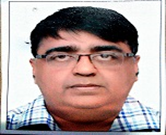Day 1 :
Keynote Forum
Robert P Foglia
University of Texas Southwestern Medical Center, USA
Keynote: A pediatric trauma program: What is the value proposition of the hospital?
Time : 10:00-10:40

Biography:
Abstract:
Keynote Forum
Asif Hasan
Aligarh Muslim University, India
Keynote: Relationship of high altitude with Congenital Heart Disease
Time : 10:40-11:20

Biography:
Abstract:
Keynote Forum
Rizwana Popatia
Weill Cornell Medical College, USA
Keynote: Pediatric asthma mortality and recent advances in asthma education
Time : 11:40-12:20

Biography:
Abstract:
- Clinical Pediatrics | Pediatrics Allergy and Infections | Pediatric Surgery | Pediatric Cardiology
Location: Waterfront 1+ Waterfront 2

Chair
Robert P Foglia
University of Texas Southwestern Medical Center, USA

Co-Chair
Asif Hasan
Aligarh Muslim University, India
Session Introduction
Dawn S Hartfield
University of Alberta, Canada
Title: Iron deficiency and neurological consequences for children

Biography:
Abstract:
Julide Sisman
UT Southwestern Medical Center, USA
Title: New perspectives on lenticulostriate vasculopathy in neonates
Biography:
Abstract:
Syed Zafar Mehdi
Baqai Medical University, Pakistan
Title: Frequency and antimicrobial susceptibility pattern of microorganisms isolated from hospitalized infantile burn cases in a tertiary care hospital

Biography:
Abstract:
Sukhotnik Igor
The Bruce Rappaport, Israel
Title: Notch signaling promotes differentiation to the absorptive cell lineage after massive small bowel resection in a rat model

Biography:
Abstract:
Tinuk Agung Meilany
Indonesia University School of Medicine, Indonesia
Title: GSTP1 I105V Polymorphism as a risk factor of wound dehischence in pediatric major abdominal surgery

Biography:
Abstract:
Benslimane Hammou
Children hospital of ORAN , Algeria
Title: Video-assisted surgery in child
Time : 16:10-16:40

Biography:
Abstract:
Robert P Foglia
University of Texas Southwestern Medical Center, USA
Title: Pediatric complex, complicated appendicitis: Is non-operative management appropriate?
Time : 16:40-17:10

